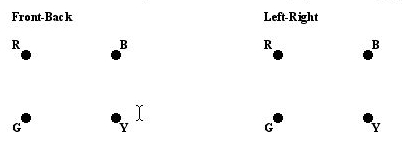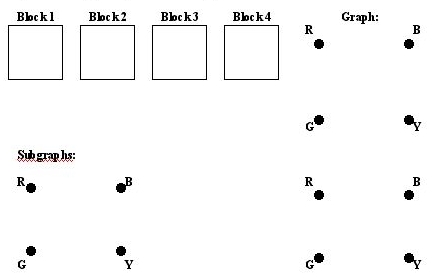
You are given four cubes with sides of four different colors:

Find a way to stack the cubes in a tower so that from whichever side you look at the tower, you see all four colors! The goal is to learn a method of solution for this game so you can solve any stack in about 5 minutes!
You have a stack of blocks with the following alignment of colors:
| Block | Left | Front | Right | Back |
| 1 | R | G | B | R |
| 2 | Y | R | Y | B |
| 3 | B | Y | R | G |
| 4 | G | B | G | Y |
Draw two graphs, one for each of the front-back and left-right pairs. For each, the vertices are given labeled by colors. On the front-back graph, draw an edge between two colors if one of the blocks has those colors on the front and back faces. Label edges by the number of the block the pair is from. Draw a similar graph for the left-right pairs.

What do you notice about the graphs? What similarities do they have? Are the similarities enough to guarantee that the stack will work? Why or why not?
Try drawing a graph for the set of blocks that you have! For convenience, you can print out this page and use the spaces below to put the blocks so you remember which is which.

Now you can put the cubes together to win!